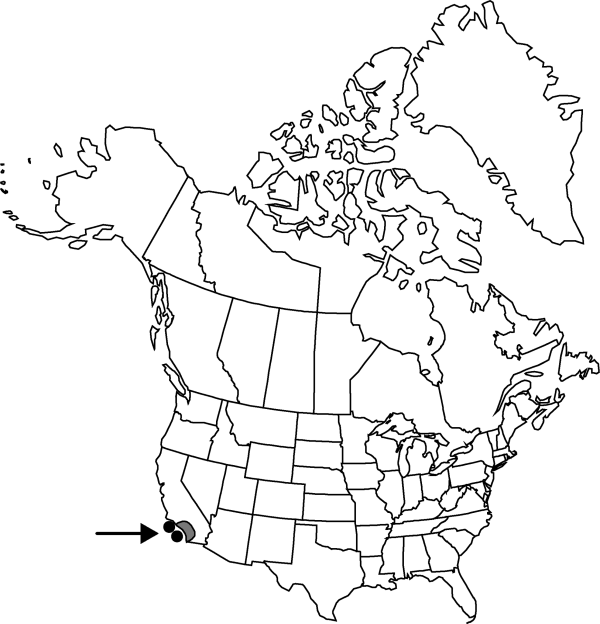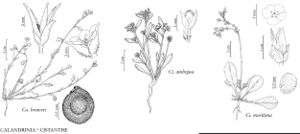Cistanthe maritima
Phytologia 68: 269. 1990.
Plants annual, taproot fleshy. Stems spreading or ascending, 7–25 cm. Leaves cauline, not forming basal rosettes; blade ovate to obovate or spatulate, flattened, 1–6 cm, glaucous. Inflorescences paniculate, loose, usually exceeding leaves. Flowers pedicellate; sepals ovate-orbiculate, slightly unequal, 3–5 mm, herbaceous, glaucous; petals disarticulate in fruit, usually 5, red-purple, 3–6 mm; stamens usually 5, anther yellow; style present; stigmas 3; pedicel 5–15 mm. Capsules ovoid, usually longer than calyx at maturity, 5–8 mm; valves 3. Seeds 20–40, dull gray, ellipsoid, 0.5–1 mm, white-hairy at 30×, strophiolate.
Phenology: Flowering Mar–Apr.
Habitat: Sandy places near sea bluffs
Elevation: 0-300 m
Distribution

Calif., Mexico (Baja California).
Discussion
Cistanthe maritima is threatened in California by habitat destruction (J. P. Smith Jr. 1984).
Selected References
None.
